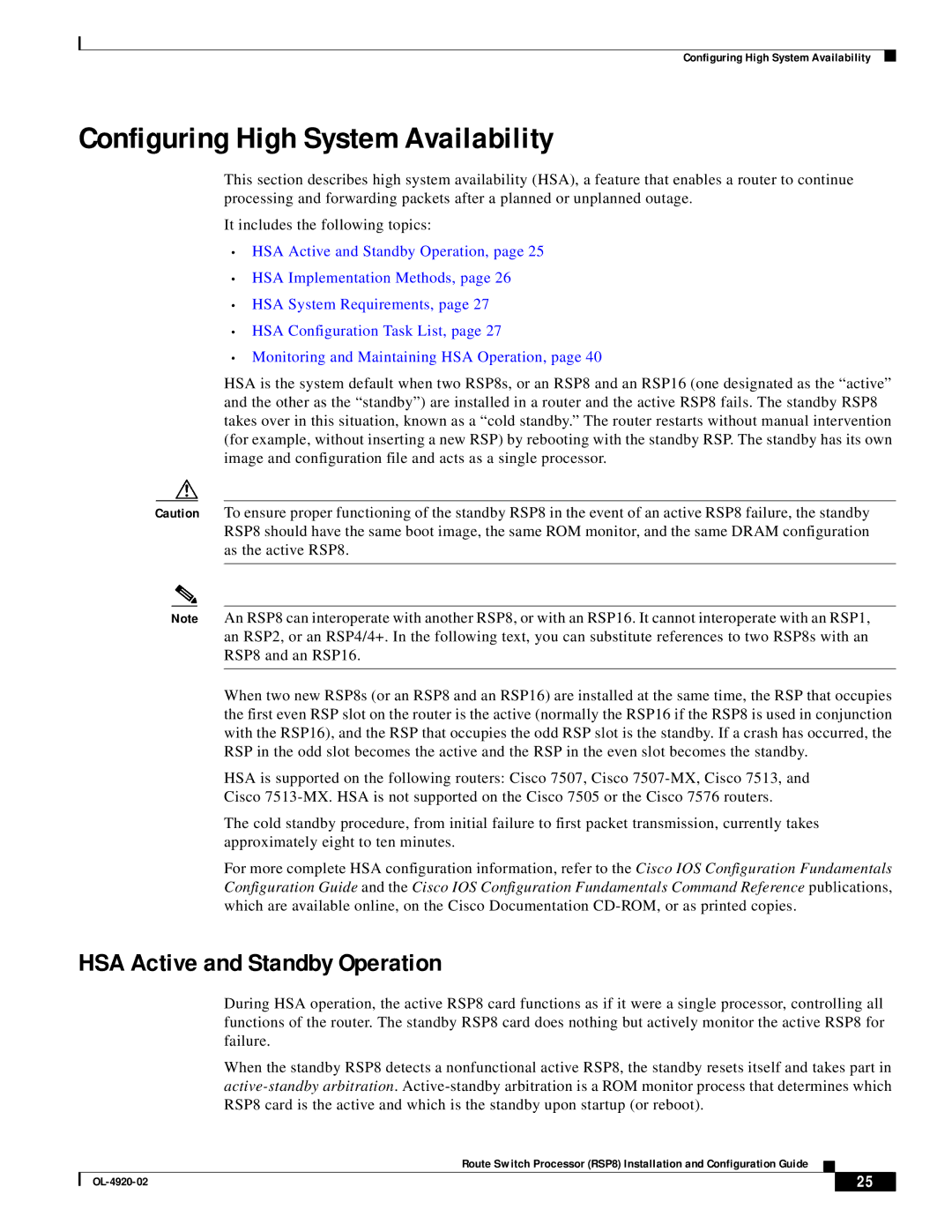
Configuring High System Availability
Configuring High System Availability
This section describes high system availability (HSA), a feature that enables a router to continue processing and forwarding packets after a planned or unplanned outage.
It includes the following topics:
•HSA Active and Standby Operation, page 25
•HSA Implementation Methods, page 26
•HSA System Requirements, page 27
•HSA Configuration Task List, page 27
•Monitoring and Maintaining HSA Operation, page 40
HSA is the system default when two RSP8s, or an RSP8 and an RSP16 (one designated as the “active” and the other as the “standby”) are installed in a router and the active RSP8 fails. The standby RSP8 takes over in this situation, known as a “cold standby.” The router restarts without manual intervention (for example, without inserting a new RSP) by rebooting with the standby RSP. The standby has its own image and configuration file and acts as a single processor.
Caution To ensure proper functioning of the standby RSP8 in the event of an active RSP8 failure, the standby RSP8 should have the same boot image, the same ROM monitor, and the same DRAM configuration as the active RSP8.
Note An RSP8 can interoperate with another RSP8, or with an RSP16. It cannot interoperate with an RSP1, an RSP2, or an RSP4/4+. In the following text, you can substitute references to two RSP8s with an RSP8 and an RSP16.
When two new RSP8s (or an RSP8 and an RSP16) are installed at the same time, the RSP that occupies the first even RSP slot on the router is the active (normally the RSP16 if the RSP8 is used in conjunction with the RSP16), and the RSP that occupies the odd RSP slot is the standby. If a crash has occurred, the RSP in the odd slot becomes the active and the RSP in the even slot becomes the standby.
HSA is supported on the following routers: Cisco 7507, Cisco
Cisco
The cold standby procedure, from initial failure to first packet transmission, currently takes approximately eight to ten minutes.
For more complete HSA configuration information, refer to the Cisco IOS Configuration Fundamentals Configuration Guide and the Cisco IOS Configuration Fundamentals Command Reference publications, which are available online, on the Cisco Documentation
HSA Active and Standby Operation
During HSA operation, the active RSP8 card functions as if it were a single processor, controlling all functions of the router. The standby RSP8 card does nothing but actively monitor the active RSP8 for failure.
When the standby RSP8 detects a nonfunctional active RSP8, the standby resets itself and takes part in
Route Switch Processor (RSP8) Installation and Configuration Guide
| 25 |
| |
|
|
